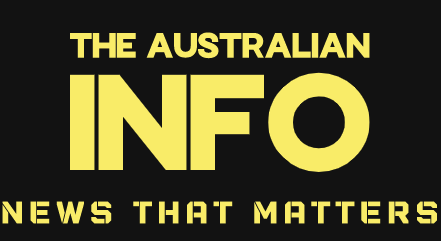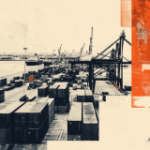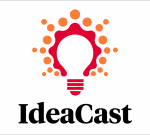In 2020, Atlassian committed to a fully distributed model, allowing employees to work from anywhere, permanently. While many tech peers later reversed course on remote work, Atlassian optimized its approach, developing data-driven routines, rethinking office spaces, and reshaping team rituals for its 12,000 employees in 13 countries.
By 2024, these practices had moved beyond HR policy to become central to the company’s strategy. Lessons from Atlassian’s internal experiments began to shape its collaboration software, turning its workforce into an innovation lab. But selling these practices to enterprise customers posed a new challenge: unlike Atlassian’s traditional self-serve model, distributed work transformation required hands-on support, strategic advising, and cultural change, capabilities the company had not previously built into its go-to-market approach.
Harvard Business School Associate Professor Ashley Whillans joins host Brian Kenny to discuss the case “Designing the Future of Work: Atlassian’s Distributed Work Practices” and the questions Atlassian’s leaders face: how to scale what works without losing flexibility, how tightly to integrate practices into products, and how to guide customers through a distributed work transformation that requires more than software alone.
BRIAN KENNY: Welcome to Cold Call, the podcast where we dive deep into the stories behind groundbreaking Harvard Business School case studies.
As organizations around the world wrestle with questions about remote work, hybrid schedules, and return to office mandates, one tech company has charted its own bold path. Atlassian, the enterprise software firm behind tools like Jira, Trello, and Confluence, made a one-way door decision in 2020 to permanently embrace distributed work. But what does it take to make that model succeed at scale? Today’s case dives deep into how Atlassian built a data-driven approach to flexibility, created new norms around meetings and collaboration, and designed physical spaces and digital systems for a radically reimagined workplace. We’ll explore how Atlassian is not just managing distributed work but actually turning it into a strategic differentiator with a research-backed playbook that may shape how companies worldwide rethink the future of work.
Today on Cold Call, we welcome Professor Ashley Whillans to discuss the case “Designing the Future of Work: Atlassian’s Distributed Work Practices.” I’m your host Brian Kenny, and you’re listening to Cold Call on the HBR podcast network. Professor Whillans’ research seeks to understand the links between time, money, and happiness. She is the author of Time Smart: How to Reclaim Your Time and Live a Happier Life, and she is a repeat customer here on Cold Call. Welcome back, Ashley.
ASHLEY WHILLANS: Thank you so much for having me.
BRIAN KENNY: It’s great to have you in the studio. This is such a relevant and timely case because here, there, and everywhere we’re talking about remote work and hybrid work and how do we do that? And should we do that? And some companies are saying, Come back to work more, and some are saying, Come back less. So, I thought this was really interesting. It raises a lot of the issues. And frankly, some of the questions that Atlassian is grappling with are the very same ones that we’re grappling with here at Harvard Business School, and I’m sure our listeners can relate. So, thanks for writing it. Thanks for being here to talk about it.
ASHLEY WHILLANS: Of course.
BRIAN KENNY: I’m going to start you off by asking what drew you to Atlassian as a subject for the case? And how does it relate to the kinds of things that you think about and the research questions that you pursue? And then what’s your cold call to start the discussion?
ASHLEY WHILLANS: Yeah, so I’ve been doing a lot of work as a time management researcher on hybrid and distributed work because obviously there’s trade-offs associated with remote work, not as much in-person connection, but you get a lot of personal flexibility. And companies are really grappling with whether and how to formalize policies and practices.
So Atlassian is, I think, an extreme example that we can learn from where they make this one-way door decision, We’re never going to force you back into the office, as the way we think about solving the collaborative challenges that arise in knowledge work. Not just hybrid work and remote work, but knowledge work is difficult. There’s a lot of people across time zones. Almost all of our teams are distributed. And Atlassian says, Let’s stop talking about the office. Why are we so hung up on this question of the office? We’re focusing our attention in the wrong place. We need to be focusing on the daily practices of how we collaborate in an intense knowledge work environment and let’s put our brains together, our design hat on and run rigorous studies and take a data-driven approach to figure out how to make knowledge work better.
BRIAN KENNY: So, how do you start the conversation off?
ASHLEY WHILLANS: I say, “If you were a recent graduate with multiple offers as a project manager at a tech company, would you choose Atlassian’s fully distributed model or another competitor’s hybrid model? And why?” And this cold call immediately surfaces the tension between having all of this flexibility about where to work and the team collaboration element that every organization must navigate. So, if you have completely remote and distributed teams, or you never have to come into the office, you have to think more carefully about when you’re going to get together and why. So, it demands this intentionality, this structure about how to work because there’s no structure around where to work. And some students are really excited about never being told what to do or where to work. And some employees scratch their head and think, Well, if I never have to be in the office and my colleagues never have to be in the office, how am I going to get the information I need? Am I going to get the right mentorship? How am I going to learn how to do my job? So that cold call raises a lot of the perspectives that we hear about distributed work in general.
BRIAN KENNY: Yeah. And it might help our listeners to understand a little bit about the scale and scope of Atlassian. Can you describe the firm a little bit?
ASHLEY WHILLANS: Atlassian is a large software company, and they have about 12,000 employees across 12 offices, so highly distributed. And their headquarters is in Australia. So, what’s interesting about the company, they develop software for predominantly engineers, so allowing them to organize their code and share tickets with each other about what needs to get done. But they’re starting to slowly take a wider view on being collaboration software for all knowledge workers everywhere. So, of course, distributed work is also part of their go-to-market strategy. If they’re going to move from selling software tech that’s really highly specialized to being a collaboration software company for every knowledge worker worldwide, we better commit to doing distributed work and then figure out how it works and how to make our products make that experience of distributed work better.
BRIAN KENNY: Yeah, and interestingly, so the stakeholder audience that they’ve dealt with mostly are engineers, as you said. And engineering is done in isolation a lot of the time where people are focused very intensely on doing one thing, but they do need to get together and brainstorm and use that time to come up with ideas together, so it’s a really interesting dynamic. How did the one-way door policy differentiate them from other people in their space?
ASHLEY WHILLANS: The co-CEOs of Atlassian, Scott Farquhar and Mike Cannon-Brookes, during COVID said, This is a moment. This is an opportunity for us to expand. We want to expand our business. We want to keep increasing the scale of our business. And this forced experiment in working remotely during COVID is going to provide us with an opportunity to hire the best talent from anywhere in the world. They kind of looked at the market and they said, I bet you all these companies that we compete against, they’re going to force employees back to the office at some point. And we’re not going to do that, we’re not going to flip-flop because if we flip-flop, we’re never going to be able to invest the time, attention, and resources that we need to make distributed work work. And that matters to us personally, because of their belief that happy employees are more productive and that remote work is something that enables people to spend time more with their friends and family, which is important for getting high-quality work and helping their workers live high-quality lives.
But also very pragmatically for their business, they could get better software engineers and talent, and they could also go to the market in a broader way. And they need to pilot these products themselves, so they need to figure out how to be the collaboration software that removes the need to go to the office, that makes the office a luxury. So, they make this one-way door decision during COVID, after a long walk on the beach, sort of thinking about in Sydney, outside of Sydney…
BRIAN KENNY: We were all walking. Everybody was walking on the beach during COVID.
ASHLEY WHILLANS: Yeah, having this long chat. Well, exactly because, well, Australia too had very strict lockdown policies. So, it was probably a long walk on a beach talking to each other over the phone in Australia during that time, thinking that, Let’s do something different. Let’s make this one-way door decision, never go back, commit 100% that we will never force another employee to come back to an office. We’ll still have offices, but they will be for intentional use, but not a requirement.
BRIAN KENNY: Yeah. And COVID, if we look at silver linings and opportunities never going to waste, COVID forced a lot of organizations to deal with this and with things that they had never had to deal with before. In the education space, we wound up going online, we figured out how to do that quickly. The benefit of that for us was that we now still use that technology, but we use it in different ways. So Atlassian is onto something here as they’re thinking about this one-way door policy, but work doesn’t just happen all by itself. Can you tell us a little bit about their system of work philosophy at Atlassian?
ASHLEY WHILLANS: Their system of work philosophy has three pillars. The first is unleashing knowledge. So, they recognize that in distributed environments, information gets buried in emails and chat threads. So, they made their tool Confluence their central nervous system where every meeting starts with a page that gets uploaded on the shared system, creating permanent searchable records for every employee in the organization. Their second system of work philosophy is aligning work to goals. So, they ensure that everyone understands not just what to do but why. The third is planning and tracking work. So, they provide structure for execution, and the key insight is that they separate where work happens from how work happens. So, they give total location flexibility but provide a lot of structure over daily work practices, through page-led meetings, calendar redesign experiments, clear KPIs, and specific collaboration windows. So again, as I like to teach this sort of along a spectrum, what are we being flexible about? They are location agnostic, and they are work practice structured. They are highly flexible on where people work and very structured about how work gets done every day and what the impact of that work is on the outcomes that matter for them.
BRIAN KENNY: Right. I get that. We haven’t talked about the protagonist, Annie Dean, and she leads the Team Anywhere, which, is that like the name of her department team?
ASHLEY WHILLANS: Yeah, I think it has a new name now, but they always have new names all the time. She got tasked with trying to figure out how to operationalize this one-way door decision.
BRIAN KENNY: So how did she approach that? How do you even begin to approach that?
ASHLEY WHILLANS: So, she is very interesting. She has an interesting career. She did a startup about flexible work way before it was in vogue in 2010, and she wrote a report predicting that flexible models of work would not only help with retention and work-life balance, reduce stress, but would also help in the case of a pandemic. So, she was one of those great thinkers like Bill Gates already predicting this pandemic in 2010.
BRIAN KENNY: That’s kind of wild. I read that in the case, and I couldn’t believe that she actually used that as a potential scenario.
ASHLEY WHILLANS: Yes, she is very forward-looking. Then she went and worked at a consulting firm during change management after she sold her startup, and that was during the period of COVID. So, she was consulting all of her clients about how to manage this digital transformation, and she got tapped on the shoulder at Atlassian as the co-CEOs were trying to figure out, Okay, we just made this one-way door decision, and we know what it means, we know what we want, we’re never going to force people to work in an office, but we have no idea what the other parts of it should look like.
She came in and she thought like a system designer. So, I think a lot of the conversations about hybrid work have been about policies. How many days are we going to come into the office? They haven’t been at that system level. So, she brought together finance, she brought together—she’s a lawyer—so she brought together the legal team. She brought together real estate because a lot of the conversations about bringing people back to the office are because their CEOs and boards are worried that their office space is going unused. And she brought together all of these groups, strategy groups, product groups, to think together about how to create a holistic solution that works for the business and that doesn’t cost a lot of money but actually creates efficiencies.
BRIAN KENNY: You talked about the systems that they require people to work in. I totally understand why that makes sense. One of the things that I think a lot of workplaces grapple with now is productivity: Are we more productive now that we’ve got people working remotely? And I think leaders have a hard time kind of wrapping their brain around, How can we be as productive as we used to be if we’re not all here? So how did Atlassian think about that? How did they measure whether or not people were as productive as they were?
ASHLEY WHILLANS: And I think that this is really key. So, they go beyond traditional metrics like office attendance or self-reported productivity. They develop novel metrics like cost per visit for real estate. So, they take total costs and divide it by actual visits to evaluate office efficiency. And this actually led to certain floors on certain offices getting closed if capacity wasn’t being met. And they do this in a variable way like month over month, week over week. So that is less on the productivity side, but more on the cost side of offering this distributed model. So, they track tidal flows to understand attendance patterns rather than static head counts.
But more to your question, they measure innovation through their Shippit hackathon data where hundreds of peers rate projects. So, they build network models that analyze digital interactions through Jira, Confluence and Slack alongside in-person connections. And this allows them to see that remote teams are just as productive as those that meet in the office. So, they’re running these experiments, doing these network models, using their own innovation tournaments internally as data. And so they’ve hired a bunch of PhDs, and they’re thinking really creatively about productivity metrics going beyond the standard HR tool kit of these engagement surveys that go out every quarter. And so one of





